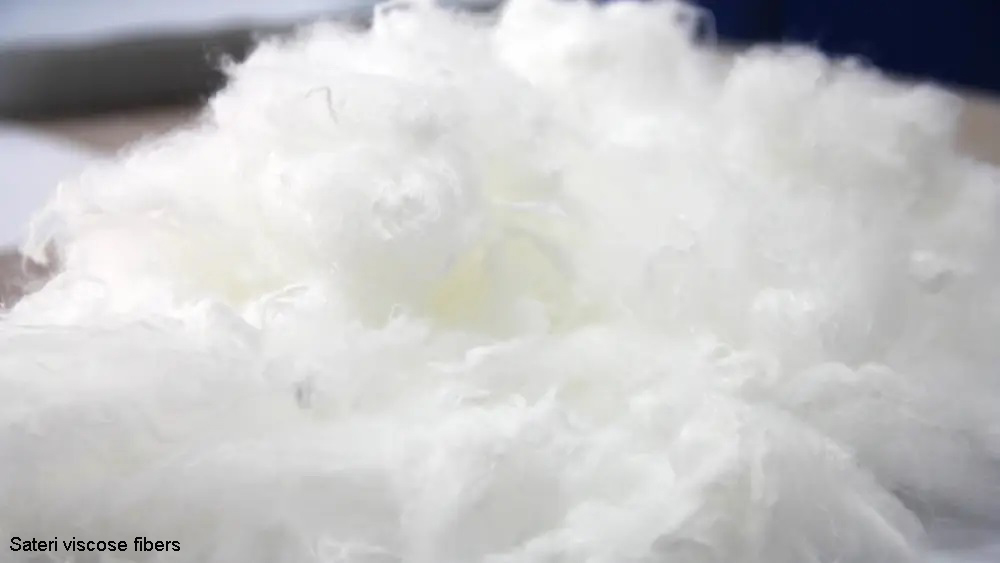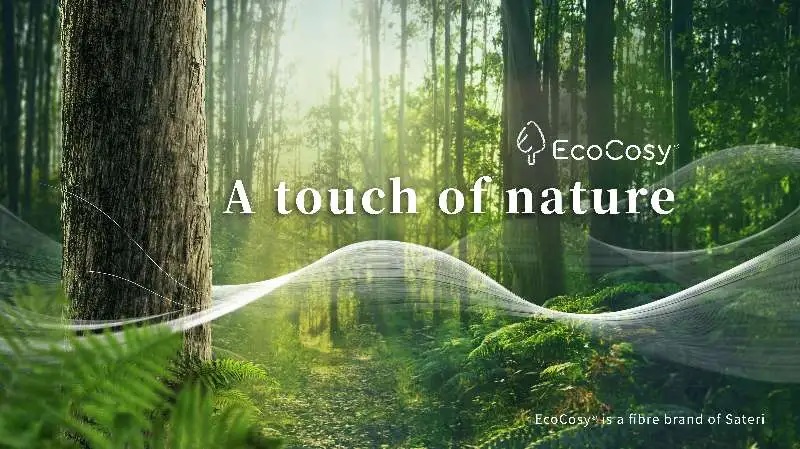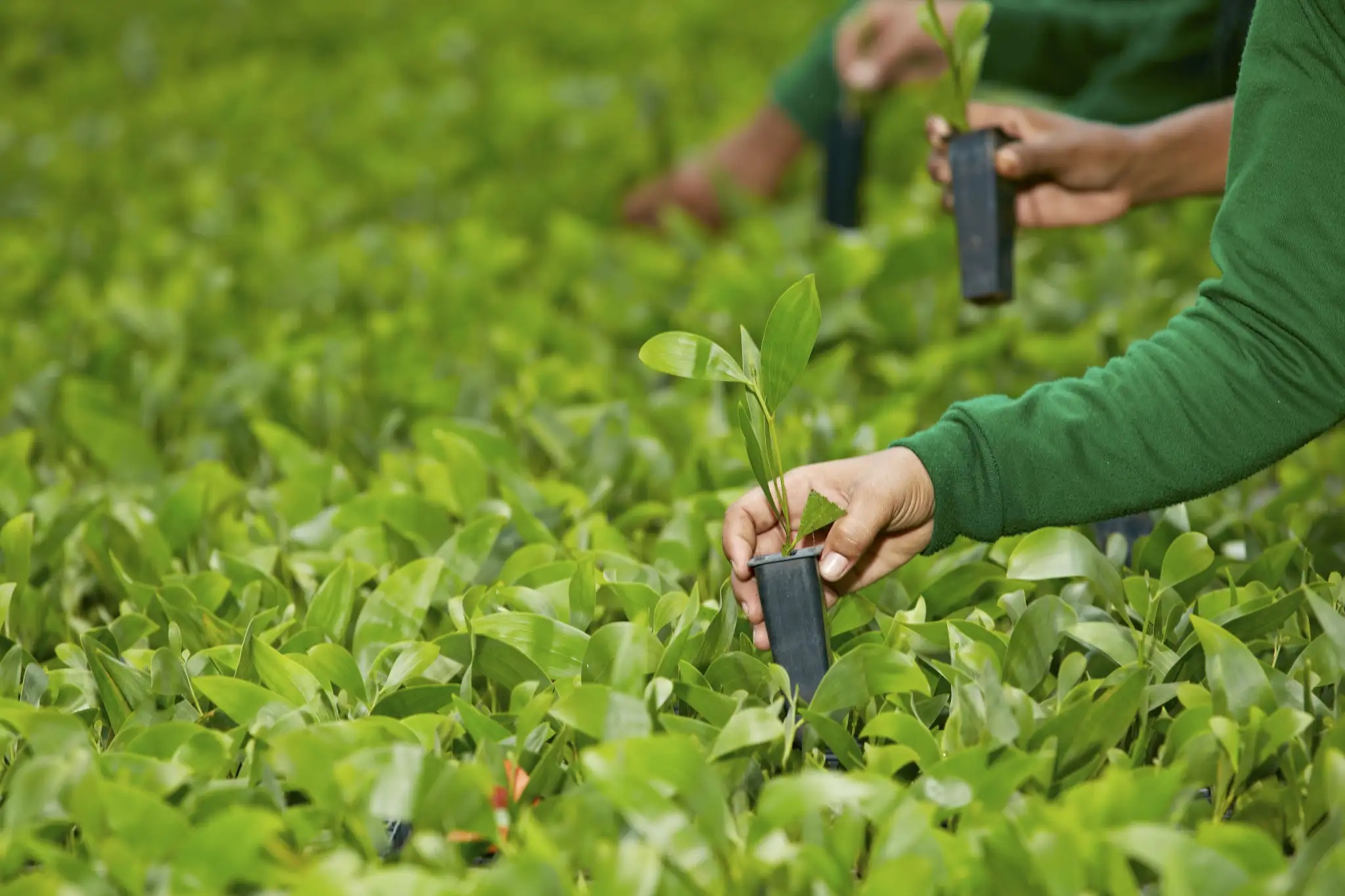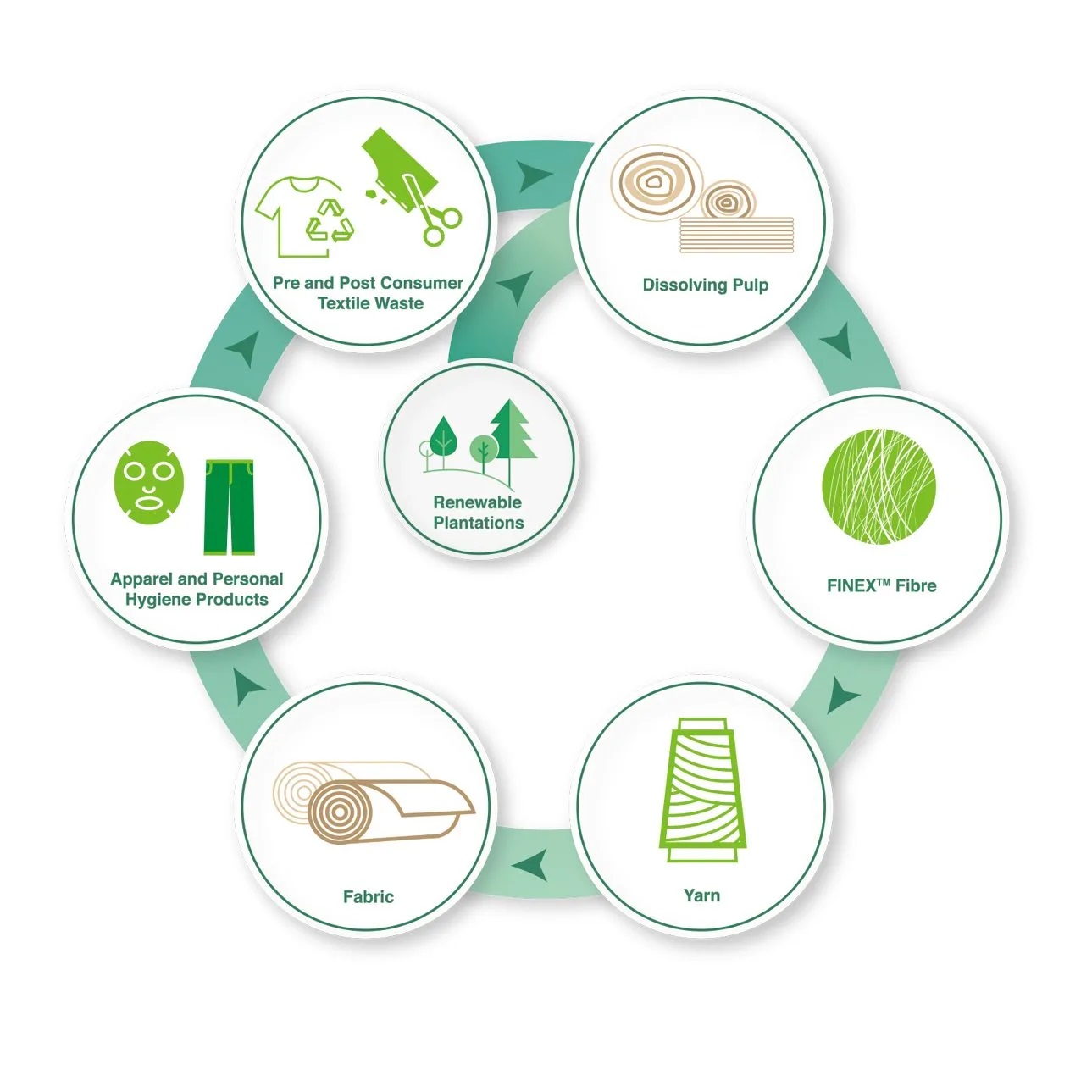
Category: General
Country: China
Region: South Asia
BY SJ GUEST EDITORIAL
FEBRUARY 13, 2023 12:00PM
Rising clothing consumption and a growing reliance on synthetic fibers have created a significant plastic pollution problem. An estimated 92 million tons of clothing waste is created each year, and with a reuse rate of just 1 percent, most of this textile waste will go to landfills.
Synthetics—including polyester and spandex—accounted for 62 percent of the textile fiber market in 2020, according to Textile Exchange. Most synthetic materials cannot biodegrade in soil, taking hundreds of years to decompose and leaching chemicals into soil and groundwater. Polymer-based microfibers also shed from garments during manufacturing, wear and laundering, ending up in bodies of water and people’s bodies through inhalation, posing a health risk.
Making the switch from synthetics to natural fibers is one way to fix fashion’s waste challenge.
Man-made cellulosic fibers (MMCFs), or wood-based materials like viscose and lyocell, are particularly promising alternatives to synthetics due to their natural, renewable and biodegradable attributes. They are also very versatile. They can create textiles that range from silky to non-woven, allowing for applications including homeware, fashion and hygiene items. Despite these benefits, adoption remains low. MMCF production volume more than doubled between 1990 and 2021 to 7.2 million tons, and yet it still holds a mere 6 percent market share.
Plant-based MMCFs can return to nature at end of life, as demonstrated by leading MMCF manufacturer Sateri, whose viscose has been certified by TUV Austria to be biodegradable in soil, water and marine environments, as well as home compostable. Fibers placed in these environs will break down into non-toxic organic material within 28 days.

One main critique of MMCFs is the potential impact to forests. Knowing the origins of the fibers is therefore critical and must be proven. This is where Sustainable Forest Management Certifications, such as the Programme for the Endorsement of Forest Certification (PEFC) and Forest Stewardship Council (FSC) can play a key role in ensuring that apparel made out of wood-based cellulosic fibers such as viscose and lyocell are sustainably sourced and responsibly produced. Textile Exchange estimates the portion of certified wood-based fibers grew from 55 to 60 percent in 2020 to 60 to 65 percent in 2021, but that leaves upwards of 35 percent that is uncertified.
Many brands and viscose companies, Sateri included, have committed to source only from renewable and sustainably managed plantations. In addition to sourcing certified materials proved via the PEFC chain of custody certification mechanism, Sateri requires all its dissolving wood pulp (DWP) suppliers to sign a Declaration of Commitment to its Pulp Sourcing Policy and provide greenhouse gas emissions information.

-COURTESY
The other key concern around MMCF production is its chemical-intensive production process, which may potentially pose damage to the environment and health risks to people. And the industry has stepped up its efforts to address these issues head-on. Sateri and some leading viscose manufacturers, accounting for more than 50 percent of viscose production, have committed to best-in-class benchmarks such as the Zero Discharge of Hazardous Chemicals (ZDHC) MMCF Responsible Fibre Production Guidelines and the European Union Best Available Techniques Reference Document (EU-BAT BREF) on polymers.
Sateri recognizes the need for the fashion industry to decouple growth from further resource impact. As a major raw material supplier, Sateri aims to support the industry’s ambition through its Vison 2030 long-term plan, which covers four dimensions of sustainability: Climate and Ecosystem Protection, Closed Loop Production, Innovation and Circularity, and Inclusive Growth. “Our vision articulates how we aspire to grow in a way that we put back more into the environment and society than we take,” said Miranda Chen, strategic marketing director at Sateri. “This would also be Sateri’s defining market differentiator underpinning our continued growth in volume and value.”
Besides sustainability, Sateri focuses on the R&D of new products, which has promoted many kinds of cellulose fiber products, including viscose fiber EcoCosy®, Sateri Lyocell, and recycled fiber FINEX™. In 2022, Sateri’s R&D expenditures exceeded $88 million.
Closing the loop
Circularity can simultaneously tackle textile waste and reduce the volume of wood needed for fiber production.
China, wherein Sateri’s operations are based, produces about half of the globe’s textile fiber volumes, and accounts for 60 percent of MMCF production. The country is also a significant consumer of these materials, at the mill and manufacturer level and at retail. China is taking an aggressive approach to circularity. In 2021, the government released a five-year plan that prioritizes material reuse, and in 2022, the National Development and Reform Commission set a 2025 goal to recycle a quarter of textile waste, producing 2 million metric tons of recycled fiber each year.
Innovating around circularity, Sateri launched recycled fibers in 2020 under the FINEX™ brand, with up to 20 percent recycled content. Short for “Fiber Next”, FINEX™ is made from pre- and post-consumer materials mixed with wood pulp, resulting in circular fibers that are identical to virgin wood-based materials. Most recently, Sateri has successfully produced FINEX™ viscose fibers with up to 50 percent recycled content.

MMCFs with values
Along with responsible sourcing and circular practices, reducing the environmental impact of MMCFs revolves around the production process.
At Sateri’s viscose and lyocell mills, the focus is on maximizing efficiency and minimizing waste. The company recovered 98 percent of sulphur in 2021. “Our viscose mills have been independently verified to be EU-BAT compliant, fulfilling the target set out in our 2030 plan two years ahead of schedule,” explained Chen.
The company was the first viscose producer to achieve the Oeko-Tex Made in Green label, the standard’s most stringent certification that includes testing for hazardous substances and assessments of the factory’s environmental and social responsibility.
As well as sustainability, Sateri places equal priority on quality. In addition to sustainability credentials, Sateri’s EcoCosy® fibers are breathable and skin-friendly with longer staple fiber lengths than other natural materials. Sateri’s functional viscose has softer hand feel, as well as anti-bacterial properties.
EcoCosy has been used for everything from intimates and athleisure to fashion garments and childrenswear. “Advanced fiber manufacturing technology helps improve the softness of fibers,” said Chen. “It can be mixed with various fibers and yarn blends to meet consumers’ desires for comfort and softness.”
Viscose can help brands meet current customer demands. “In the post-epidemic era, consumers’ purchasing habits have changed,” explained Chen. “People began to pay more attention to physical and mental health than work achievement. Consumers changed from hectic lifestyles to healthy and comfort living, which also impacted apparel purchases.”
Sateri aims to become a net-zero producer by 2050 in step with the objectives of the United Nations Paris Climate Agreement to limit global warming to 1.5°C. As part of this commitment, Sateri has introduced carbon-neutral versions of its EcoCosy® viscose fibers, Sateri Lyocell and FINEX™ recycled fibers that are combined with credits to compensate for carbon emissions that cannot be avoided or reduced. “In addition to meeting our own goals, we also hope to support our customers meet their sustainability ambition to reduce the carbon intensity of their products,” said Chen.
MMCF production is projected to possibly reach 10 million tons in the next 15 years, about double where it stands today. Whether around sustainability, circularity or adoption rates, wood-based fiber makers like Sateri are planting roots that will usher in more growth.
Courtesy: https://sourcingjournal.com/sustainability/sustainability-materials/sateri-man-made-cellulosic-fibers-sustainability-impact-circularity-carbon-neutral-vision-2030-414080/
Copyrights © 2026 GLOBAL TEXTILE SOURCE. All rights reserved.